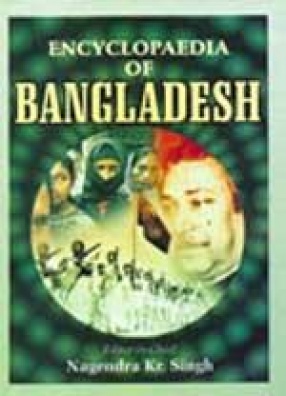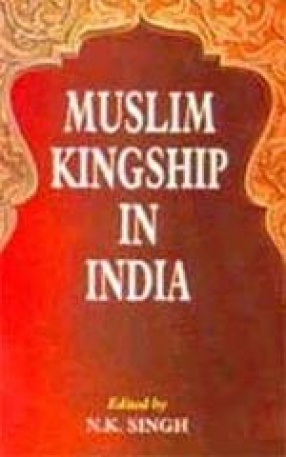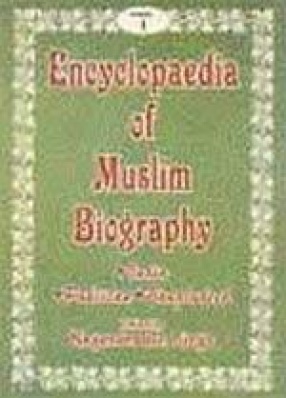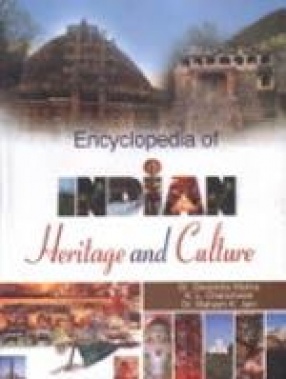Encyclopaedia of Bangladesh is a pioneering attempt by the reputed scholars to bring together not only the all aspects of the history and culture of Bangladesh but also provides factual details of the geographical features, philosophy, religion, socio-economic life of rural and urban people, history of politics and political developments, folk culture, art and architecture, literature, dance and drama, painting, and women and their socio-political status of Bangladesh since the earliest time to present day in a logical sequence and alphabetical order. Bangladesh is the second most densely populated nation in the world. India virtually surrounds the whole country on the west, north and east; on its southeast is Burma. Its area is 55,598 sq. miles/144,020 sq. km. According to the tradition the people who fled from the Gangetic plains to escape capture and enslavement by the Aryans came and settled in Bengal. Later, the Buddhists also came and took refugee in these parts from the aggressive Brahmans, It was probably the Guptas who annexed major part of this area in their imperial fold and brought about some sort of unification of Bengal. But Gupta supremacfy was not totally unchallenged and smaller rulers retained virtual independence. The first time Bengal as really unified was under the Palas in the eighth century A.D. Islam was brought to Bengal by Muslim traders and traveling Sufis/saints. From the very beginning Islam was introduced into the Indian Subcontinent, and Islam’s message of equality and brotherhood had deep impact on a substantial part of population. The early Muslim rulers of Delhi especially the Tughluqs conquered most parts of Bengal. Under the indepdent Ilyas Shahi rule in mid-fourteenth century again Bengal was properly unified and it was during this rule that the name Bangala was coined for the entire country. Under the Mughals again Bengal was unified. The Britishers came to India as traders and gradually through cheat, deceit, bribery and corruption they started extending their grip all over the Subcontinent. Their first military victory was in Bengal at the Battle of Plessey in 1757. Astutely following their policy of divide and rule, they completely routed the last Mughal Emperor, Bhadur Shah Zafar, in 1857, in Delhi and thus became the masters of the whole of India. Bengal Presidency under the British rule extended from the frontier of Assam to the border of United Provinces which were to be dominated by the Bengali-speaking people. In 1905 the Colonial British Government divided Bengal into two parts-east and west-despite strong resentment by the people and statesmen. But this plan did not work and ultimately this partition was annulled in 1911. Subsequently Bihar and Orissa became separate provinces and Bengal became a province of Bengali-speaking people only. In 1947 with partition of India into India and Pakistan, East Bengal became the part of Pakistan. West Bengal in India comprised of old Rarh and Gaurha, while East Bengal in Pakistan covered Varendra, Vanga and Samatata. The Pakistani Constitution of 1956 named East Bengal as East Pakistan. The dissolution of West Pakistan and consequent recreation of the old provinces with their old names gave rise to the demand for renaming East Pakistan as Bangladesh. This demand also signified the resurgence of Bengali nationalism. By the beginning of 1970, Bangladesh became the commonly accepted name for East Pakistan. It was expected that the National Assembly elected in December, 1970 would designate Bangladesh as a state in the Federation of Pakistan. The failure of the democratic process and the constitutional method in Pakistan in the wake of Yahya’s armed attack on the Bengalis and his usurpation of power by nullifying the results of the popular election gave birth to the independent state of Bangladesh on April 26, 1971. Instead of a state of Bangladesh in the federation of Pakistan, there emerged from the mountain of corpses and debris of destruction that characterised the dismemberment of Pakistan, an independent state of Bangladesh under the leadership of Shaikh Mujibur Rahman. The mountain of corpses and debris of destruction that characterised the dismemberment of Pakistan, an independent state of Bangladesh under the leadership of Shaikh Mujibur Rahman. In 1947, the Government of Bangladesh took emergency powers to curb widespread violence and Shaikh Mujibur Rahman, who was regarded as the father of the nation, was assassinated and a series of coups followed, thus shaking the stability of the infant republic. The decline in Jute trade which was country’s major export also greatly disturbed the economy of the country. Natural calamities, like frequent floods and cyclones, have also added to the socio-economic ruin of the country. Martial Law, which was enforced since 1975, was lifted on 6 April, 1979, prior to the opening of the parliament. On 30 May 1981, President Ziaur Rahaman who had succeeded Shaikh Mujeebur Rahman and who had played a significant role in the work of the OIC, was assassinated in a coup de’ etat by army rivals. Ziaur Rahman’s trusted Vice President, Justice Abdus Sattar formally assumed the presidency, after being so elected, but was ousted in a coup by army chief of staff Gen. H.M. Ershad, in March 1982. On restoration of democracy, Shaikh Hasina took the reigns of new government in the Bangladesh. Consequent upon the results of new elections currently, a democratic government under the leadership of Begum Khalida Zia is at the helm of affairs. Aamar Bangla Sonar Bangla’- expresses the feeling of profound attachment of common Bengalis with their land. Bengalis are the scion of great literary and cultural heritage. Bengladesh is a land with a proud history. Nature has made its people soft and yet determined. Love of music and arts is imparted to the Bengalis by the roaring rivers and murmuring rooks, green shrubberies and whistling paddy fields, chirping birds and drizzling rains of Bangladesh. A naturally fertile land, it accommodates world’s one of the thickest concentration of human beings. Illiterate and poor, the Bengalis are yet a people with sophistication and grace: A melting pot of races. They represent a liberal attitude and an extreme individualism. This multi-volume Encyclopaedia will give comprehensive picture of social, political, economic, religious and cultural life of the people of Bangladesh in historical perspective.
Encyclopaedia of Bangladesh (In 30 Volumes)
In stock
Free & Quick Delivery Worldwide
Bibliographic information
Title
Encyclopaedia of Bangladesh (In 30 Volumes)
Author
Edition
1st ed.
Publisher
ISBN
9788126113903
Length
9000p., 25cm.
Subjects








There are no reviews yet.